Container and vertical vegetable gardens are all the rage and perfectly accommodate cut and come again varieties. The key is selecting the right kind of plants. Small spaces may not accommodate foods like winter squash or corn, but many other common edibles work perfectly. Many of them can be cut for use and will spring right back with new growth.
Harvesting cut and come again vegetables
Cut and come again foods are harvested differently than other veggies. Many plants will regrow after they have been harvested if the root system is left intact. Veggies that grow from a central point or rosette are the best choices. When you harvest the plant, remove the outer, older leaves. This ensures the center growing point remains and produces more leaves. Other types of plants will continue to produce if only the largest part is removed, allowing peripheral shoots to keep growing. Still others can be entirely lopped off at nearly ground level and will produce fresh growth. Here we reveal the best varieties to grow in a small space.
1. Leeks
Leeks are members of the allium family and have a gentle onion flavor and more subtle perfume. They are classics in quiche and potato leek soup. Learning how to grow leeks from seed is simple, and they can be directly sown into the ground. Alternatively, they can be started indoors and the slender seedlings transplanted into a prepared container. To keep the leeks growing, simply cut them a couple inches (5cm) above the soil surface. As long as the leek’s root system remains undisturbed, the plant will send out new greenery.
2. Lettuce and greens
Lettuces and greens are the ultimate cut and come again plants. Romaine, butter, and other varieties of lettuce will continue growing through the season if you only take off the outer leaves. The practice will also work on an iceberg lettuce if you only remove the outside leaves and not the whole head. Kale, Swiss chard, radicchio, mache, and sorrel are examples of greens that will still thrive when some of the greenery is removed. Greens – the leafy part of edible veggies – may also be harvested repeatedly without harming the plant. Turnip, collard, beet, and mustard are all delicious types of greens to harvest over and over.
3. Broccoli
Broccoli is one of the plants where you can harvest a full-sized head and allow the side shoots to continue to grow. These won’t become full-sized heads themselves, but smaller florets that are still delicious. The leaves of broccoli can also be harvested and have a milder but similar flavor to the flower head. Growing broccoli in pots is a great option for those with limited space. It is a cool season plant and will often simply flower or fail to produce florets during the hot summer. However, wait until the end of the season and a well cared for plant will produce some fall florets for your dining table.
4. Amaranth
Amaranth is an ancient grain packed filled with nutrients including phosphorus, manganese, and iron, as well as protein. It is high in fiber, but low in fat. When grown for its grain, the flower head is left on the plant to dry. To harvest amaranth, this flower head is cut and placed in a bag to drop the dried seeds or grain. However, the plant’s leaves are healthy and tasty, and can be taken throughout the season. Just be sure to only take one third of the plant’s leaves so it has plenty left to photosynthesize.
5. Asparagus
Growing asparagus requires some patience as it can take a few years for the plant to produce seed once the roots are in the ground. But once it takes off, an asparagus plant will last for years and yield slender green stalks. As spring warms up, begin to harvest asparagus shoots as they are ready. Harvesting actually encourages the plant to produce more. Even the little baby shoots are delicious added to a salad. Tougher, older asparagus can be made tender by peeling off the thickened outer skin. Asparagus will produce from spring until fall, with cut and come again ease.
6. Dandelion
Dandelion isn’t technically a crop since it appears where we don’t want it, but it has a lot of uses. It’s also packed full of Vitamins A, D, C, and D, as well as potassium, iron, and zinc. Sowing some dandelion seeds in a container provides lovely yellow flowers and tasty greens. Dandelion leaves can be cut many times during the season. The youngest greens are the least bitter and removing these will not harm the plant. To keep the plant from spreading, remove the flowers before they form seeds. These can be used to make dandelion wine, syrup, or even pan or deep fried. Older leaves can still be eaten if they are boiled or fried with a fat to remove the bitterness. Purslane is another “weed” with huge nutrient content and a cut and come again harvesting nature.
7. Celery
Celery takes quite a long time to establish from seed, but it is ready for harvest by the end of the season. As the plant matures, the leaves and outer stalks can be taken as needed. Celery adds that little bit of something to soups and stews and much needed crunch in items like tuna salad. Cut the stalks three quarters of the way down the stems.
8. Cress
While not as well known in the States, cress is a delicious plant. It imparts a slight peppery, zingy flavor when added to salads or other dishes. Cress seeds grow super fast and are ready to start harvesting just two weeks after planting. This is a small plant perfect for container gardening. Cut the stems leaving half an inch (1.5cm) still attached to the main plant. Cress is best used fresh from the plant, but can keep for a day in the vegetable crisper.
9. Herbs
What is cooking without herbs? Herbs impart powerful flavor and aroma to recipes, and so planting a herb garden should be a priority for every home cook. Basil is one of the warm season cut and come again herbs that we can enjoy with our ripening tomatoes. Remove leaves as needed, but never more than one third. Parsley similarly can be snipped whenever its freshness is required. Most herbs don’t mind a bit of snipping – the below varieties can all be enjoyed as cut and come again crops:
AniseBee balmBorageChivesChamomileDillHyssopLavenderLovageMintOreganoRosemarySageSavory
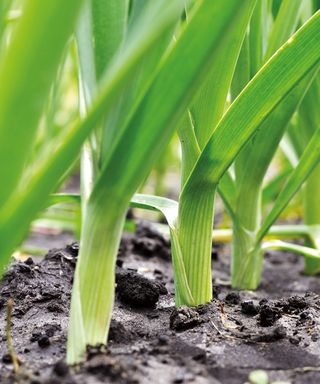
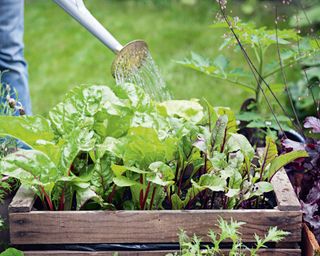
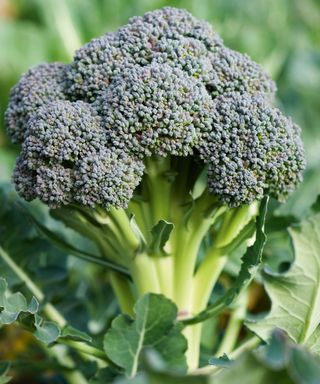
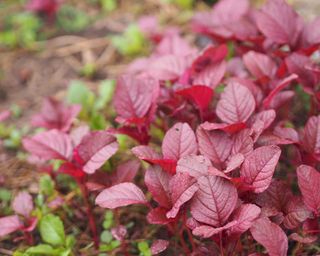

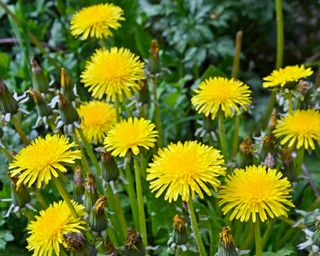
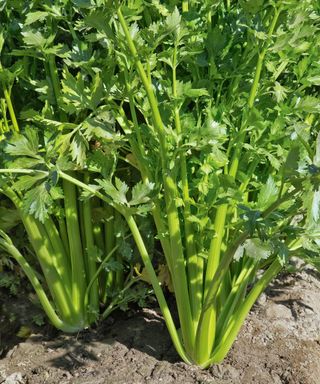
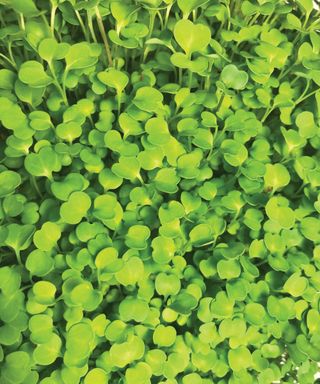
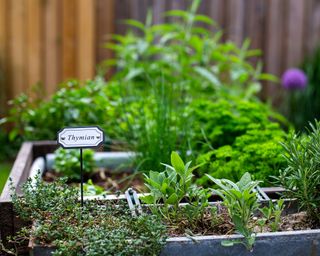


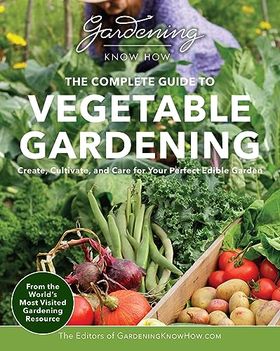
title: “9 Cut And Come Again Crops For Small Spaces” ShowToc: true date: “2024-10-03” author: “Winifred Parker”
Container and vertical vegetable gardens are all the rage and perfectly accommodate cut and come again varieties. The key is selecting the right kind of plants. Small spaces may not accommodate foods like winter squash or corn, but many other common edibles work perfectly. Many of them can be cut for use and will spring right back with new growth.
Harvesting cut and come again vegetables
Cut and come again foods are harvested differently than other veggies. Many plants will regrow after they have been harvested if the root system is left intact. Veggies that grow from a central point or rosette are the best choices. When you harvest the plant, remove the outer, older leaves. This ensures the center growing point remains and produces more leaves. Other types of plants will continue to produce if only the largest part is removed, allowing peripheral shoots to keep growing. Still others can be entirely lopped off at nearly ground level and will produce fresh growth. Here we reveal the best varieties to grow in a small space.
1. Leeks
Leeks are members of the allium family and have a gentle onion flavor and more subtle perfume. They are classics in quiche and potato leek soup. Learning how to grow leeks from seed is simple, and they can be directly sown into the ground. Alternatively, they can be started indoors and the slender seedlings transplanted into a prepared container. To keep the leeks growing, simply cut them a couple inches (5cm) above the soil surface. As long as the leek’s root system remains undisturbed, the plant will send out new greenery.
2. Lettuce and greens
Lettuces and greens are the ultimate cut and come again plants. Romaine, butter, and other varieties of lettuce will continue growing through the season if you only take off the outer leaves. The practice will also work on an iceberg lettuce if you only remove the outside leaves and not the whole head. Kale, Swiss chard, radicchio, mache, and sorrel are examples of greens that will still thrive when some of the greenery is removed. Greens – the leafy part of edible veggies – may also be harvested repeatedly without harming the plant. Turnip, collard, beet, and mustard are all delicious types of greens to harvest over and over.
3. Broccoli
Broccoli is one of the plants where you can harvest a full-sized head and allow the side shoots to continue to grow. These won’t become full-sized heads themselves, but smaller florets that are still delicious. The leaves of broccoli can also be harvested and have a milder but similar flavor to the flower head. Growing broccoli in pots is a great option for those with limited space. It is a cool season plant and will often simply flower or fail to produce florets during the hot summer. However, wait until the end of the season and a well cared for plant will produce some fall florets for your dining table.
4. Amaranth
Amaranth is an ancient grain packed filled with nutrients including phosphorus, manganese, and iron, as well as protein. It is high in fiber, but low in fat. When grown for its grain, the flower head is left on the plant to dry. To harvest amaranth, this flower head is cut and placed in a bag to drop the dried seeds or grain. However, the plant’s leaves are healthy and tasty, and can be taken throughout the season. Just be sure to only take one third of the plant’s leaves so it has plenty left to photosynthesize.
5. Asparagus
Growing asparagus requires some patience as it can take a few years for the plant to produce seed once the roots are in the ground. But once it takes off, an asparagus plant will last for years and yield slender green stalks. As spring warms up, begin to harvest asparagus shoots as they are ready. Harvesting actually encourages the plant to produce more. Even the little baby shoots are delicious added to a salad. Tougher, older asparagus can be made tender by peeling off the thickened outer skin. Asparagus will produce from spring until fall, with cut and come again ease.
6. Dandelion
Dandelion isn’t technically a crop since it appears where we don’t want it, but it has a lot of uses. It’s also packed full of Vitamins A, D, C, and D, as well as potassium, iron, and zinc. Sowing some dandelion seeds in a container provides lovely yellow flowers and tasty greens. Dandelion leaves can be cut many times during the season. The youngest greens are the least bitter and removing these will not harm the plant. To keep the plant from spreading, remove the flowers before they form seeds. These can be used to make dandelion wine, syrup, or even pan or deep fried. Older leaves can still be eaten if they are boiled or fried with a fat to remove the bitterness. Purslane is another “weed” with huge nutrient content and a cut and come again harvesting nature.
7. Celery
Celery takes quite a long time to establish from seed, but it is ready for harvest by the end of the season. As the plant matures, the leaves and outer stalks can be taken as needed. Celery adds that little bit of something to soups and stews and much needed crunch in items like tuna salad. Cut the stalks three quarters of the way down the stems.
8. Cress
While not as well known in the States, cress is a delicious plant. It imparts a slight peppery, zingy flavor when added to salads or other dishes. Cress seeds grow super fast and are ready to start harvesting just two weeks after planting. This is a small plant perfect for container gardening. Cut the stems leaving half an inch (1.5cm) still attached to the main plant. Cress is best used fresh from the plant, but can keep for a day in the vegetable crisper.
9. Herbs
What is cooking without herbs? Herbs impart powerful flavor and aroma to recipes, and so planting a herb garden should be a priority for every home cook. Basil is one of the warm season cut and come again herbs that we can enjoy with our ripening tomatoes. Remove leaves as needed, but never more than one third. Parsley similarly can be snipped whenever its freshness is required. Most herbs don’t mind a bit of snipping – the below varieties can all be enjoyed as cut and come again crops:
AniseBee balmBorageChivesChamomileDillHyssopLavenderLovageMintOreganoRosemarySageSavory












title: “9 Cut And Come Again Crops For Small Spaces” ShowToc: true date: “2024-09-24” author: “Jeffrey Fulk”
Container and vertical vegetable gardens are all the rage and perfectly accommodate cut and come again varieties. The key is selecting the right kind of plants. Small spaces may not accommodate foods like winter squash or corn, but many other common edibles work perfectly. Many of them can be cut for use and will spring right back with new growth.
Harvesting cut and come again vegetables
Cut and come again foods are harvested differently than other veggies. Many plants will regrow after they have been harvested if the root system is left intact. Veggies that grow from a central point or rosette are the best choices. When you harvest the plant, remove the outer, older leaves. This ensures the center growing point remains and produces more leaves. Other types of plants will continue to produce if only the largest part is removed, allowing peripheral shoots to keep growing. Still others can be entirely lopped off at nearly ground level and will produce fresh growth. Here we reveal the best varieties to grow in a small space.
1. Leeks
Leeks are members of the allium family and have a gentle onion flavor and more subtle perfume. They are classics in quiche and potato leek soup. Learning how to grow leeks from seed is simple, and they can be directly sown into the ground. Alternatively, they can be started indoors and the slender seedlings transplanted into a prepared container. To keep the leeks growing, simply cut them a couple inches (5cm) above the soil surface. As long as the leek’s root system remains undisturbed, the plant will send out new greenery.
2. Lettuce and greens
Lettuces and greens are the ultimate cut and come again plants. Romaine, butter, and other varieties of lettuce will continue growing through the season if you only take off the outer leaves. The practice will also work on an iceberg lettuce if you only remove the outside leaves and not the whole head. Kale, Swiss chard, radicchio, mache, and sorrel are examples of greens that will still thrive when some of the greenery is removed. Greens – the leafy part of edible veggies – may also be harvested repeatedly without harming the plant. Turnip, collard, beet, and mustard are all delicious types of greens to harvest over and over.
3. Broccoli
Broccoli is one of the plants where you can harvest a full-sized head and allow the side shoots to continue to grow. These won’t become full-sized heads themselves, but smaller florets that are still delicious. The leaves of broccoli can also be harvested and have a milder but similar flavor to the flower head. Growing broccoli in pots is a great option for those with limited space. It is a cool season plant and will often simply flower or fail to produce florets during the hot summer. However, wait until the end of the season and a well cared for plant will produce some fall florets for your dining table.
4. Amaranth
Amaranth is an ancient grain packed filled with nutrients including phosphorus, manganese, and iron, as well as protein. It is high in fiber, but low in fat. When grown for its grain, the flower head is left on the plant to dry. To harvest amaranth, this flower head is cut and placed in a bag to drop the dried seeds or grain. However, the plant’s leaves are healthy and tasty, and can be taken throughout the season. Just be sure to only take one third of the plant’s leaves so it has plenty left to photosynthesize.
5. Asparagus
Growing asparagus requires some patience as it can take a few years for the plant to produce seed once the roots are in the ground. But once it takes off, an asparagus plant will last for years and yield slender green stalks. As spring warms up, begin to harvest asparagus shoots as they are ready. Harvesting actually encourages the plant to produce more. Even the little baby shoots are delicious added to a salad. Tougher, older asparagus can be made tender by peeling off the thickened outer skin. Asparagus will produce from spring until fall, with cut and come again ease.
6. Dandelion
Dandelion isn’t technically a crop since it appears where we don’t want it, but it has a lot of uses. It’s also packed full of Vitamins A, D, C, and D, as well as potassium, iron, and zinc. Sowing some dandelion seeds in a container provides lovely yellow flowers and tasty greens. Dandelion leaves can be cut many times during the season. The youngest greens are the least bitter and removing these will not harm the plant. To keep the plant from spreading, remove the flowers before they form seeds. These can be used to make dandelion wine, syrup, or even pan or deep fried. Older leaves can still be eaten if they are boiled or fried with a fat to remove the bitterness. Purslane is another “weed” with huge nutrient content and a cut and come again harvesting nature.
7. Celery
Celery takes quite a long time to establish from seed, but it is ready for harvest by the end of the season. As the plant matures, the leaves and outer stalks can be taken as needed. Celery adds that little bit of something to soups and stews and much needed crunch in items like tuna salad. Cut the stalks three quarters of the way down the stems.
8. Cress
While not as well known in the States, cress is a delicious plant. It imparts a slight peppery, zingy flavor when added to salads or other dishes. Cress seeds grow super fast and are ready to start harvesting just two weeks after planting. This is a small plant perfect for container gardening. Cut the stems leaving half an inch (1.5cm) still attached to the main plant. Cress is best used fresh from the plant, but can keep for a day in the vegetable crisper.
9. Herbs
What is cooking without herbs? Herbs impart powerful flavor and aroma to recipes, and so planting a herb garden should be a priority for every home cook. Basil is one of the warm season cut and come again herbs that we can enjoy with our ripening tomatoes. Remove leaves as needed, but never more than one third. Parsley similarly can be snipped whenever its freshness is required. Most herbs don’t mind a bit of snipping – the below varieties can all be enjoyed as cut and come again crops:
AniseBee balmBorageChivesChamomileDillHyssopLavenderLovageMintOreganoRosemarySageSavory












title: “9 Cut And Come Again Crops For Small Spaces” ShowToc: true date: “2024-10-11” author: “Albert Reynolds”
Container and vertical vegetable gardens are all the rage and perfectly accommodate cut and come again varieties. The key is selecting the right kind of plants. Small spaces may not accommodate foods like winter squash or corn, but many other common edibles work perfectly. Many of them can be cut for use and will spring right back with new growth.
Harvesting cut and come again vegetables
Cut and come again foods are harvested differently than other veggies. Many plants will regrow after they have been harvested if the root system is left intact. Veggies that grow from a central point or rosette are the best choices. When you harvest the plant, remove the outer, older leaves. This ensures the center growing point remains and produces more leaves. Other types of plants will continue to produce if only the largest part is removed, allowing peripheral shoots to keep growing. Still others can be entirely lopped off at nearly ground level and will produce fresh growth. Here we reveal the best varieties to grow in a small space.
1. Leeks
Leeks are members of the allium family and have a gentle onion flavor and more subtle perfume. They are classics in quiche and potato leek soup. Learning how to grow leeks from seed is simple, and they can be directly sown into the ground. Alternatively, they can be started indoors and the slender seedlings transplanted into a prepared container. To keep the leeks growing, simply cut them a couple inches (5cm) above the soil surface. As long as the leek’s root system remains undisturbed, the plant will send out new greenery.
2. Lettuce and greens
Lettuces and greens are the ultimate cut and come again plants. Romaine, butter, and other varieties of lettuce will continue growing through the season if you only take off the outer leaves. The practice will also work on an iceberg lettuce if you only remove the outside leaves and not the whole head. Kale, Swiss chard, radicchio, mache, and sorrel are examples of greens that will still thrive when some of the greenery is removed. Greens – the leafy part of edible veggies – may also be harvested repeatedly without harming the plant. Turnip, collard, beet, and mustard are all delicious types of greens to harvest over and over.
3. Broccoli
Broccoli is one of the plants where you can harvest a full-sized head and allow the side shoots to continue to grow. These won’t become full-sized heads themselves, but smaller florets that are still delicious. The leaves of broccoli can also be harvested and have a milder but similar flavor to the flower head. Growing broccoli in pots is a great option for those with limited space. It is a cool season plant and will often simply flower or fail to produce florets during the hot summer. However, wait until the end of the season and a well cared for plant will produce some fall florets for your dining table.
4. Amaranth
Amaranth is an ancient grain packed filled with nutrients including phosphorus, manganese, and iron, as well as protein. It is high in fiber, but low in fat. When grown for its grain, the flower head is left on the plant to dry. To harvest amaranth, this flower head is cut and placed in a bag to drop the dried seeds or grain. However, the plant’s leaves are healthy and tasty, and can be taken throughout the season. Just be sure to only take one third of the plant’s leaves so it has plenty left to photosynthesize.
5. Asparagus
Growing asparagus requires some patience as it can take a few years for the plant to produce seed once the roots are in the ground. But once it takes off, an asparagus plant will last for years and yield slender green stalks. As spring warms up, begin to harvest asparagus shoots as they are ready. Harvesting actually encourages the plant to produce more. Even the little baby shoots are delicious added to a salad. Tougher, older asparagus can be made tender by peeling off the thickened outer skin. Asparagus will produce from spring until fall, with cut and come again ease.
6. Dandelion
Dandelion isn’t technically a crop since it appears where we don’t want it, but it has a lot of uses. It’s also packed full of Vitamins A, D, C, and D, as well as potassium, iron, and zinc. Sowing some dandelion seeds in a container provides lovely yellow flowers and tasty greens. Dandelion leaves can be cut many times during the season. The youngest greens are the least bitter and removing these will not harm the plant. To keep the plant from spreading, remove the flowers before they form seeds. These can be used to make dandelion wine, syrup, or even pan or deep fried. Older leaves can still be eaten if they are boiled or fried with a fat to remove the bitterness. Purslane is another “weed” with huge nutrient content and a cut and come again harvesting nature.
7. Celery
Celery takes quite a long time to establish from seed, but it is ready for harvest by the end of the season. As the plant matures, the leaves and outer stalks can be taken as needed. Celery adds that little bit of something to soups and stews and much needed crunch in items like tuna salad. Cut the stalks three quarters of the way down the stems.
8. Cress
While not as well known in the States, cress is a delicious plant. It imparts a slight peppery, zingy flavor when added to salads or other dishes. Cress seeds grow super fast and are ready to start harvesting just two weeks after planting. This is a small plant perfect for container gardening. Cut the stems leaving half an inch (1.5cm) still attached to the main plant. Cress is best used fresh from the plant, but can keep for a day in the vegetable crisper.
9. Herbs
What is cooking without herbs? Herbs impart powerful flavor and aroma to recipes, and so planting a herb garden should be a priority for every home cook. Basil is one of the warm season cut and come again herbs that we can enjoy with our ripening tomatoes. Remove leaves as needed, but never more than one third. Parsley similarly can be snipped whenever its freshness is required. Most herbs don’t mind a bit of snipping – the below varieties can all be enjoyed as cut and come again crops:
AniseBee balmBorageChivesChamomileDillHyssopLavenderLovageMintOreganoRosemarySageSavory











